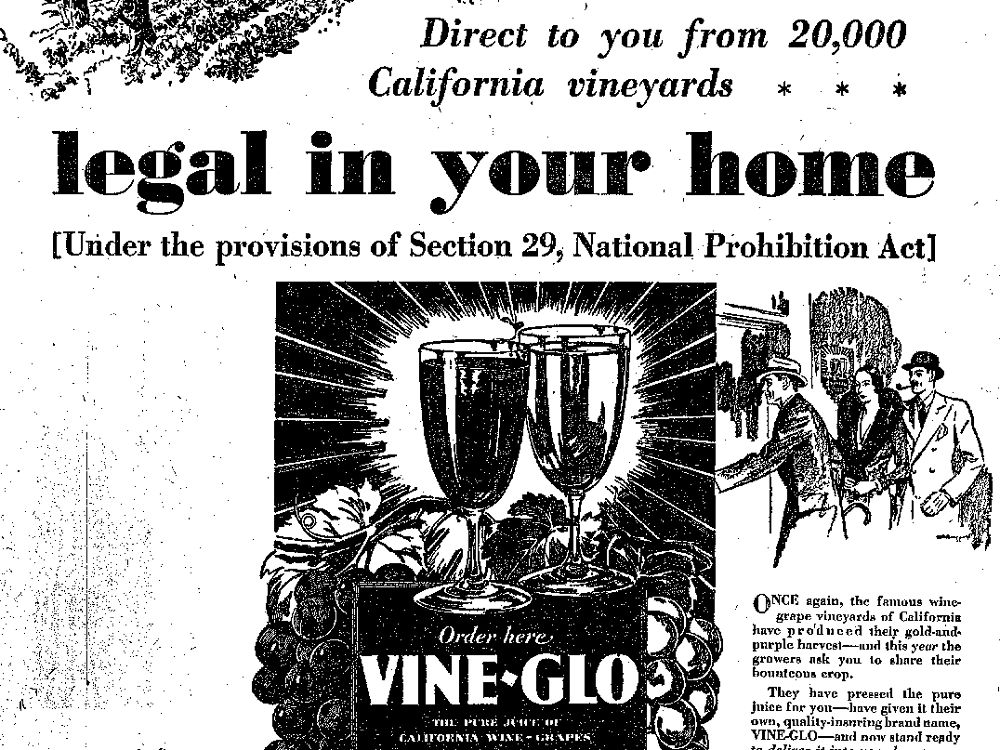This week in 1920, a federal law enforcing the Eighteenth Amendment to the US Constitution (the Prohibition Amendment) took effect.
The Volstead Act, as it was known, made it illegal to “manufacture, sell, barter, transport, import, export, deliver, furnish, or possess” most alcoholic beverages.
But there were loopholes, and today we’re going to tell you about one of the most ingenious of them all: the “wine brick” or “grape brick.”
The Prohibition movement could have been an extinction-level event for many vineyards.
For decades, some of them had cultivated their grapevines so that they could be turned into wine, and suddenly they couldn’t do that anymore.
One option was to surrender, and pull out the grapevines and replace them with orchards.
But if Prohibition was repealed, they would have to start from scratch and that would take years, maybe even decades.
The growers could have moved into other product lines – grape ketchup or grape fudge were made and sold around this time – but just as non-wine grape varieties don’t always make great wine, wine grapes don’t always work well for other products.
So many now-former winemakers figured out a workaround that was legal and appealing to those who were living under the Volstead Act but missed their wine.
They turned the grapes into concentrated juice bricks.
And they sold these bricks with packaging that explained to the consumer that they could take the bricks home, but under no circumstances should they put a brick of grape juice into a gallon of water and then put the new mixture into a jug for 21 days in a cool place, because if they did that it would turn into wine.
Some of these instructions even warned that certain types of grapes could be used to make certain types of wine and you wouldn’t want to do that!
The grape growers were complying with the law, because they weren’t making wine, the people who bought them were!
And people bought plenty of them: some of the grape growers who had stayed in the game wound up making fortunes, because the price of grapes went way up.
Some of the California wineries that became huge after Prohibition actually got their starts in the era of the grape brick.
The only question is, what kind of toast did they raise to all their success back then?
Today in 1922, the birthday of television legend Betty White.
Her first TV appearance was in 1939 and she stayed on screen for the rest of her long life.
One of the few exceptions was during World War II, when she joined the American Women’s Voluntary Services and drove supplies to defense installations around southern California.
Her uniform, cap and shoulder bag are now part of the collection of the National Museum of American History.
Please note, Golden Girls fans, that they are not in St. Olaf!
Rare Prohibition ‘grape brick’ that turns into wine on show (The Drinks Business)
Betty White’s shoulder bag is a time capsule of World War II (National Museum of American History)
Image from Fruit Industries, Public Domain, via Wikicommons

